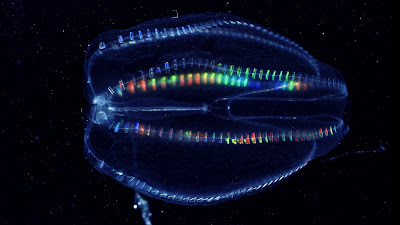
Tuesday 29 July 2014
Sunday 27 July 2014
Tuesday 22 July 2014
AMMONITES & MARINE REPTILES FROM THE MYSTERIOUS CREEK FORMATION
The Cretaceous-Jurassic exposures near Harrison Lake,
British Columbia are an easy two hour drive from Vancouver and another hour or
so to our final destination, the unyielding siltstone of the Callovian, 166 million year old, Mysterious Creek Formation.
A few hours of collecting yield multiple bivalves,
ammonites, including what looks to be two new species.
Amongst the best
specimens of the day are several small, fairly well preserved Cadoceras (Paracadoceras)
tonniense, a few Cadoceras (Pseudocadoceras) grewingki and two relatively
complete specimens of the larger, smooth Cadoceras comma. Further up the road,
we photograph blocks of buchia and large boulders encrusted with perfectly
preserved belemnites from ancient squid.
Interestingly, the ammonites from here are quite similar to
the ones found within the lower part of the Chinitna Formation, Alaska and
Jurassic Point, Kyuquot, on the west coast of Vancouver Island. The siltstone here at Harrison has also offered up a small
section of vertebra from a poorly preserved marine reptile, a find I'm rather
keen to make one day. So, after much hammer swinging, I've enjoyed a splendid
day, collected beautiful specimens and feel a wee bit closer to the big find.
Sunday 13 July 2014
TYLOSTOMA TUMIDUM
This lovely big fellow is Tylostoma tumidum, an epifaunal grazing Lower Cretaceous Gastropod from white, micritic, coarsely nodular limestone deposits of the Goodland Formation at White Settlement west of Fort Worth, Texas, USA. (171.6 to 58.7 Ma). The bedding here is massive with some thin clay beds. The macro fossil found here include the ammonite, Oxytropidoceras acutocarinatum, pelecypods such as Protocardia, Pinna and Lima wacoensis along with heart-shaped urchins in abundance and lovely gastropods such as this beauty, Tylostoma tumidum.
Tylostoma have thick, smooth shells with a moderately elevated spire. Their aperture is ovato-lunate with the lips meeting above at a sharp angle. The outer lip is furnished internally, running the whole length and ending with a thickened edge. This specimen shows the wear and tear of erosion common at the site.
Tylostoma have thick, smooth shells with a moderately elevated spire. Their aperture is ovato-lunate with the lips meeting above at a sharp angle. The outer lip is furnished internally, running the whole length and ending with a thickened edge. This specimen shows the wear and tear of erosion common at the site.
Saturday 5 July 2014
LIVING FOSSIL: COMB JELLY
 |
| Living Fossil / Comb Jelly / Ctenophore |
Subscribe to:
Posts (Atom)



